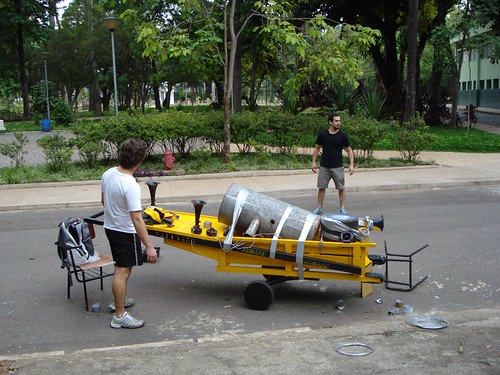Mobility as Freedom
Interessante artigo de Kevin Hamilton – Mobility as Freedom in Critical Art and New Media, professor e pesquisador da University of Illinois, mostrando as ambiguidades dos projetos com as mídias locativas, principalmente no que se refere a questões da mobilidade, que rebatem sobre outras como imobilidade, poder, cartesianismo, sujeito, identidade…
Foto do blog do Kevin Hamilton, “Burro-sem-rabo”
Trechos:
“(…) Throughout these and other criticisms of spatially-preoccupied work in art and new media, we see some common themes. Though not every criticism directly addresses claims to freedom by mobile practice, most point to the problematic ambiguity of movement for its own sake, as demonstrated through the abstract representations of most GPS drawings, or mapped social networks. Also, and importantly, many critics share a concern for how discourses of travel, exchange, and mobility tend to reinforce a stable, autonomous subject. Even Marc Tuters and Kazys Varnelis, who dismiss as nostalgic any concern for Locative Media’s dependence on Cartesian space, admit that ‘locative media seems fundamentally tied to discourses of representation centered on a human subject, privileging the experience of the human in space (tracing) and time (annotative).’

Burro-sem-rabo, com som e GPS do grupo brasileiro HAPAX
(…) Mobility, for Cresswell and others, never originates from within the self, but is granted from outside, exchanged, gifted, or stolen. Mobilities depend on other ‘moorings’ or even immobilities. Likewise, access or rights to mobility should be granted relationally. Mobility does not make one ‘free’ – it makes one differently dependent.
(…) Every mobility comes at the expense of another’s lessened mobility; representations of abstract, universalizing movement serve to obscure the transfer of power. These are extremely helpful points to keep in mind when examining works in art and new media that celebrate or employ mobile forms, especially when they make claims to freedom (as do Tuters and Varnelis, in their comparison of Locative Media to earlier forms of Internet Art.(…)”
